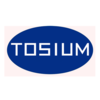鈹青銅薄片預(yù)置鎳中間層的微電阻點(diǎn)焊鈹青銅薄片預(yù)置鎳中間層的微電阻點(diǎn)焊Micro-resistance spot welding of Ni interlayer of QBe2 sheets 為提高鈹青銅薄片微電阻點(diǎn)焊的接頭性能,采用0.05 mm厚純鎳作為中間層對(duì)0.1 mm厚鈹青銅進(jìn)行焊接,對(duì)比分析預(yù)置鎳層與未預(yù)置鎳層時(shí)的點(diǎn)焊接頭性能,并綜合研究中間層的作用機(jī)理。結(jié)果表明:鈹青銅薄片預(yù)置鎳中間層后,點(diǎn)焊接頭焊核尺寸增大,接頭抗拉剪力提高79.2%,斷口結(jié)合面撕裂區(qū)呈韌性斷裂特征,接頭熱影響區(qū)組織為細(xì)小的胞狀晶、焊核中心及底部區(qū)域?yàn)榈容S晶;鎳中間層的添加改變接頭連接機(jī)制,整個(gè)接頭由熔化焊及釬焊連接組成。另外,通過產(chǎn)熱分析發(fā)現(xiàn),預(yù)置鎳中間層增加鎳與鈹青銅之間的接觸電阻和鎳層體電阻,接頭總產(chǎn)熱電阻增大;鎳中間層通過增大焊接熱輸入以及擴(kuò)大接頭連接區(qū)域面積使得接頭的質(zhì)量提高。 In order to improve the micro-resistance spot welding (MRSW) joint performance, two beryllium bronze sheets with thickness of 0.1 mm were welded with 0.05 mm-thick pure nickel foil as interlayer. The effects of interlayer on joint properties were investigated by the comparison of joints welded with or without Ni interlayer. The results show that the larger size of nuggets welding with Ni interlayer is observed, correspondingly, the shearing force increases by 79.2%. The ductile fracture is shown at faying surface. The cross section morphology of typical MRSW joint with Ni interlayer is characterized as fine cellular crystal in HAZ and equiaxed crystal in the centre or bottom area of joint. When welding with nickel interlayer, the joint is comprised of the fusion welding at center and brazing at peripheral region. As result, the bounding mechanism is changed. Further, the analysis results of thermal generation during MRSW show that Ni interlayer bring forth the contact resistance between Ni foil and beryllium bronze sheet and the bulk resistance of Ni foil which results in the increased resistance participated in whole heat generation. The improved MRSW joint performance results from the increased heat generation and enlarged brazing bonding area.
|







